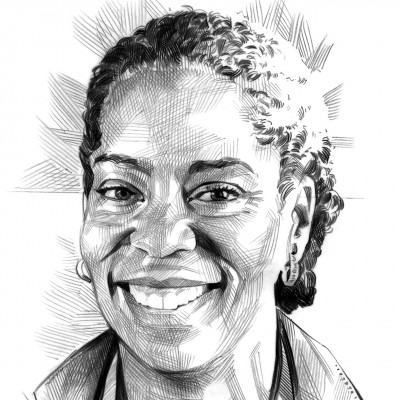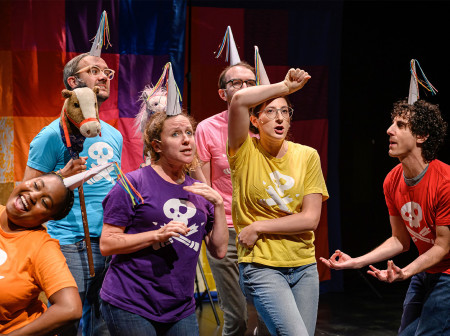Would you be on this bus if this was your reality?
That was the question asked of me and about 25 other minority high school seniors in 1987 as members of the Kellogg School of Management’s Leadership, Education and Development (LEAD) summer program. We were the best and the brightest, embarking on a journey, unbeknownst to us, to make visible our support structures and learning resources that seamlessly combined to create the opportunity paths that resulted in each of us having a seat on the bus.

Illustration by Bruce Morser
We arrived at our destination for the day, an aging Chicago Housing Authority complex with a high school nearby. We were to spend the school day paired with students. Their stories of life in urban Chicago were as strange to me as my stories of suburban life in Kansas City, Kan., were to them. On our journey back to Evanston, we were asked to quietly reflect on the question, “Would you be on this bus if Chicago’s West Side was your lived reality?”
My first interaction with Northwestern made visible the role of support structures in my life. This awakening followed me to Stanford, where, as an undergrad, I was a reading tutor for youth in East Palo Alto, the community a biking distance from Stanford but a world apart in terms of the inequities in opportunities.
When tutoring, I realized that the students and I lived different lives. They did not have access to a resourced, tight-knit suburban community as I did, one whose caring adults used city parks and classrooms to provide the extracurricular opportunities that kept my friends and me busy while strengthening our ability to lead, persist, collaborate, problem solve and celebrate others’ successes. All these skills, in addition to my academic knowledge, have been critical tools on my journey. The inequity in our out-of-school opportunities gnawed at me.
It was a bevy of opportunities, people and experiences that made it possible for me to become a computer scientist . Now it’s my responsibility to ensure that the next young girl has access to the resources to create her own path.
When I returned to the University in 1992 as a student in the first cohort of the learning sciences doctoral program, I was awakened to the transformative power of well-designed learning technologies. I’ve spent the last 20 years working to create the infrastructure needed to support kids in developing their digital literacy. I’m excited about bringing the Digital Youth Divas program to the Evanston community.
Studies show that if a girl has not engaged in out-of-school STEM learning opportunities during the middle grades, regardless of how well she does academically, she will not major in a STEM field in college. The Digital Youth Divas program is designed to create an environment where girls can be girls and also explore ways in which technology is relevant for them.
When I returned to the University in 2018 as a professor, I was reminded of being a student on the bus answering a life-altering question. Now I am the professor asking questions and seeking to stimulate my students’ lifelong exploration of answers sparked through our interactions. Hopefully, I can have the same impact that my Northwestern professors had on me.
Nichole Pinkard ’98 PhD is an associate professor in the Northwestern University School of Education and Social Policy.



Reader Responses
Brilliant! Dr. Pinkard's creative energy is exactly what is needed to pave the way for youth who may not have ended up on that bus to explore their potential. She is a rock star in the field of STEM education. We are so lucky to have her in the Evanston community.
—Melanie West Evanston, via Northwestern Magazine
What tremendous vision displayed by Dr. Pinkard. I'm simply dazzled. I must confess, though, that I am also blown away by the achievements of the chatty little girl I saw next door in KCK.
How wonderful that Dr. Pinkard has focused her talent on this very essential mission.
—Gerald Jordan '71 MS, Fayetteville, Ark., via Northwestern Magazine
No one has commented on this page yet.
Submit a Response